Description
This is an original steel printing die from the reign of William IV (1830–1837), featuring the British Royal Coat of Arms from the Hanoverian era. Designed for use in a printing press, this die was likely employed in the production of official documents, legal certificates, royal proclamations, or financial instruments during the final years before the separation of the British and Hanoverian crowns in 1837.
The finely detailed engraving presents the quartered shield, displaying the three lions of England, the lion rampant of Scotland, the harp of Ireland, and the Hanoverian arms, reflecting Britain’s connection to Hanover under William IV. The shield is supported by the lion of England and the unicorn of Scotland, with an elaborate royal crest and mantling above, symbolizing the monarch’s authority. The surrounding mottoes, “Dieu et mon droit” and “Honi soit qui mal y pense,” reinforce the royal sovereignty and the chivalric traditions of the Order of the Garter.
Steel dies such as this were a vital component of government printing, official authentication, and security measures in the early 19th century. As steel engraving replaced copper engraving, dies like this became standard for high-relief printing, letterpress, and embossing techniques, ensuring sharp, durable, and high-quality impressions on important documents. Given its exceptional craftsmanship, this die was likely manufactured for use by the British Royal Mint, a government printing office, or a legal institution, where it would have been pressed into paper, foil, or wax to authenticate state-issued papers and royal decrees.
The inclusion of Hanoverian arms confirms that this die predates 1837, when Queen Victoria ascended the throne and removed the Hanoverian elements from the British coat of arms. As a historical artifact, this piece represents the final years of the Hanoverian dynasty in Britain and the administrative evolution of the royal government under William IV. Its presence in a printing press environment indicates that it played a crucial role in standardizing and securing official documentation, making it an important example of early 19th-century printing technology and governmental authentication practices.
Constructed from a solid piece of steel, this die remains in original fine condition and is of museum quality. A one-of-a-kind artifact, it is authentic and historically correct, weighing 240 grams, with dimensions of height 23mm, length 33.8mm, and width 38mm.

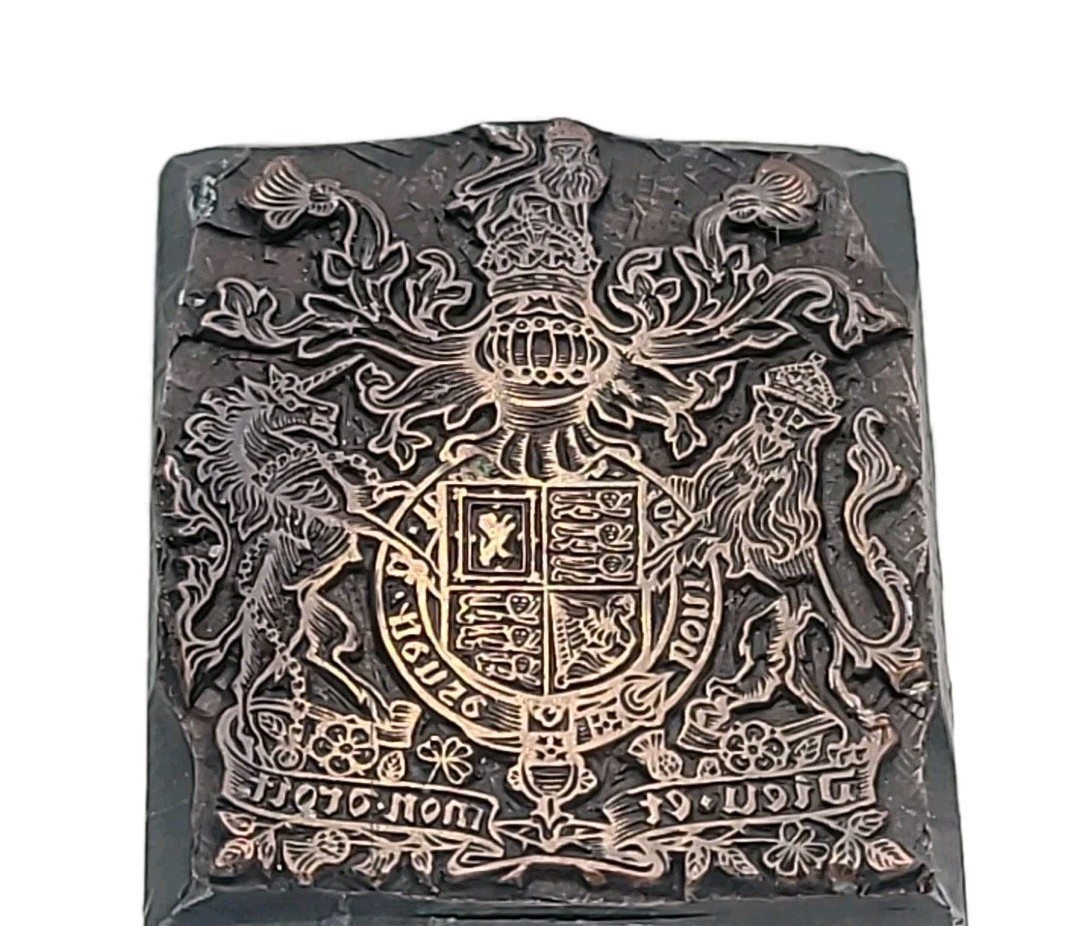
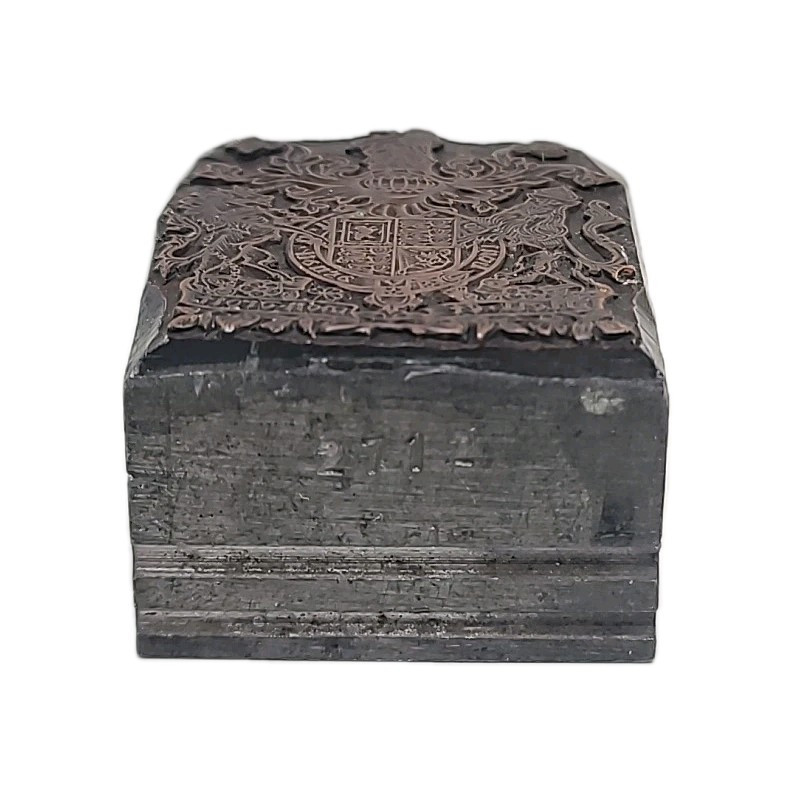
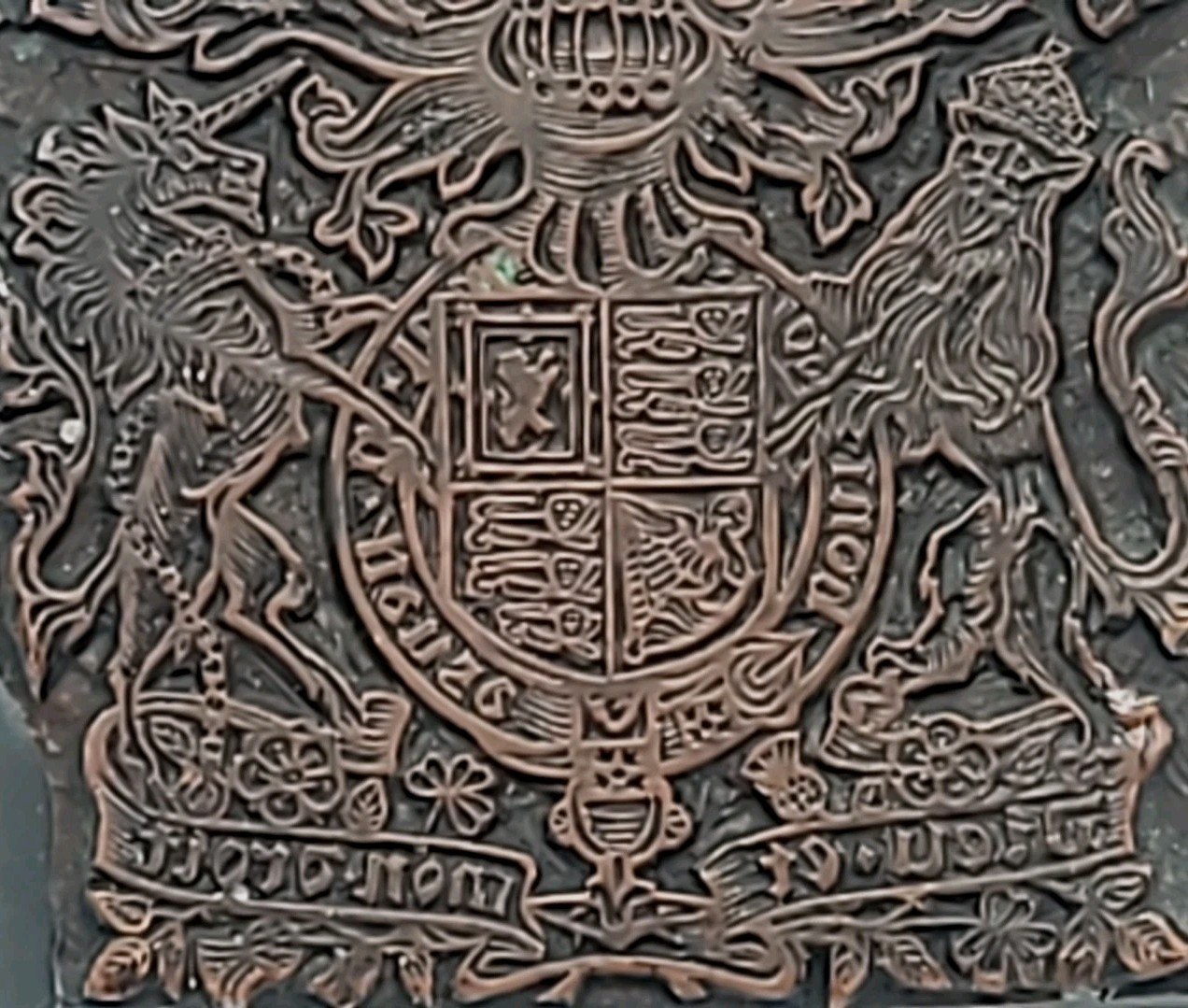
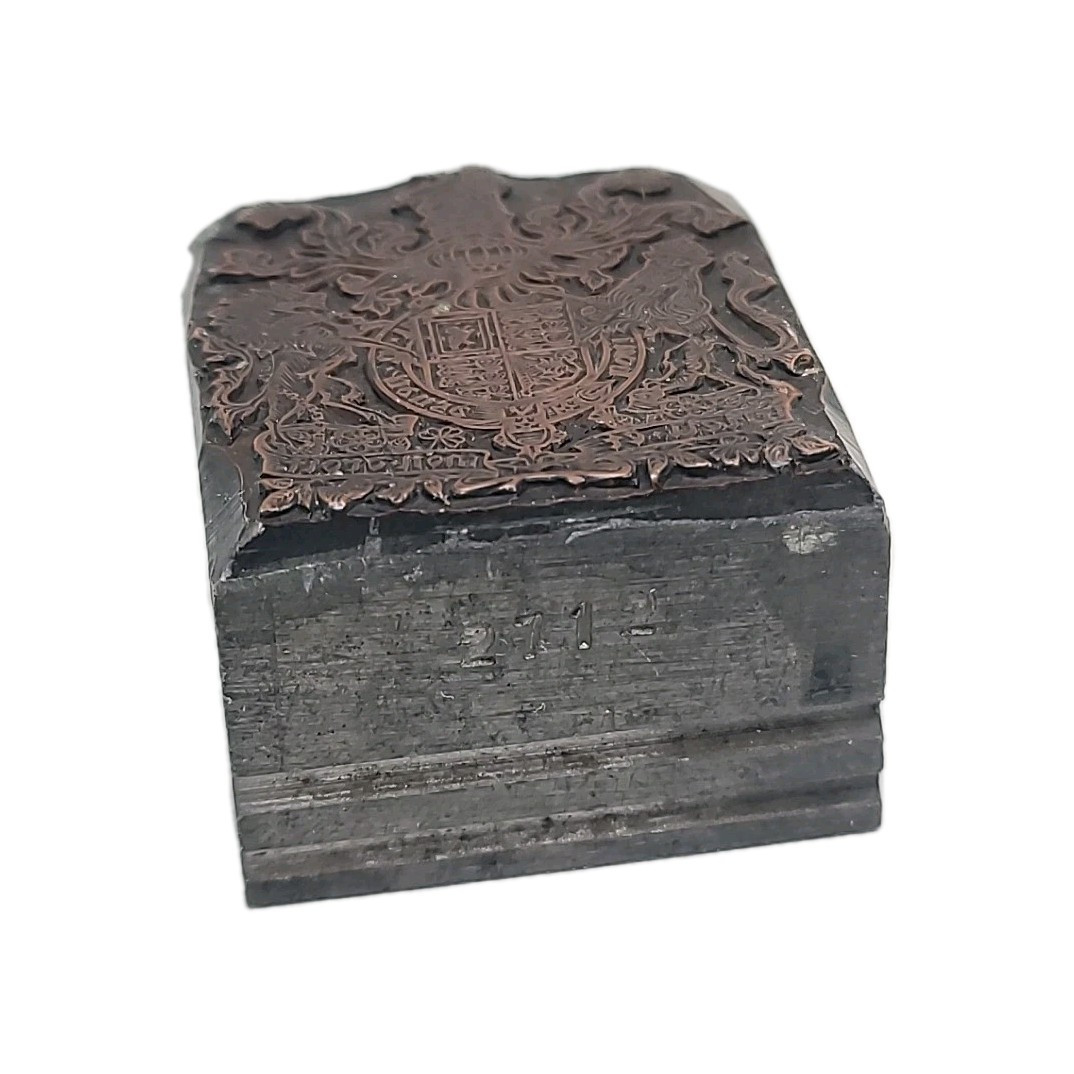
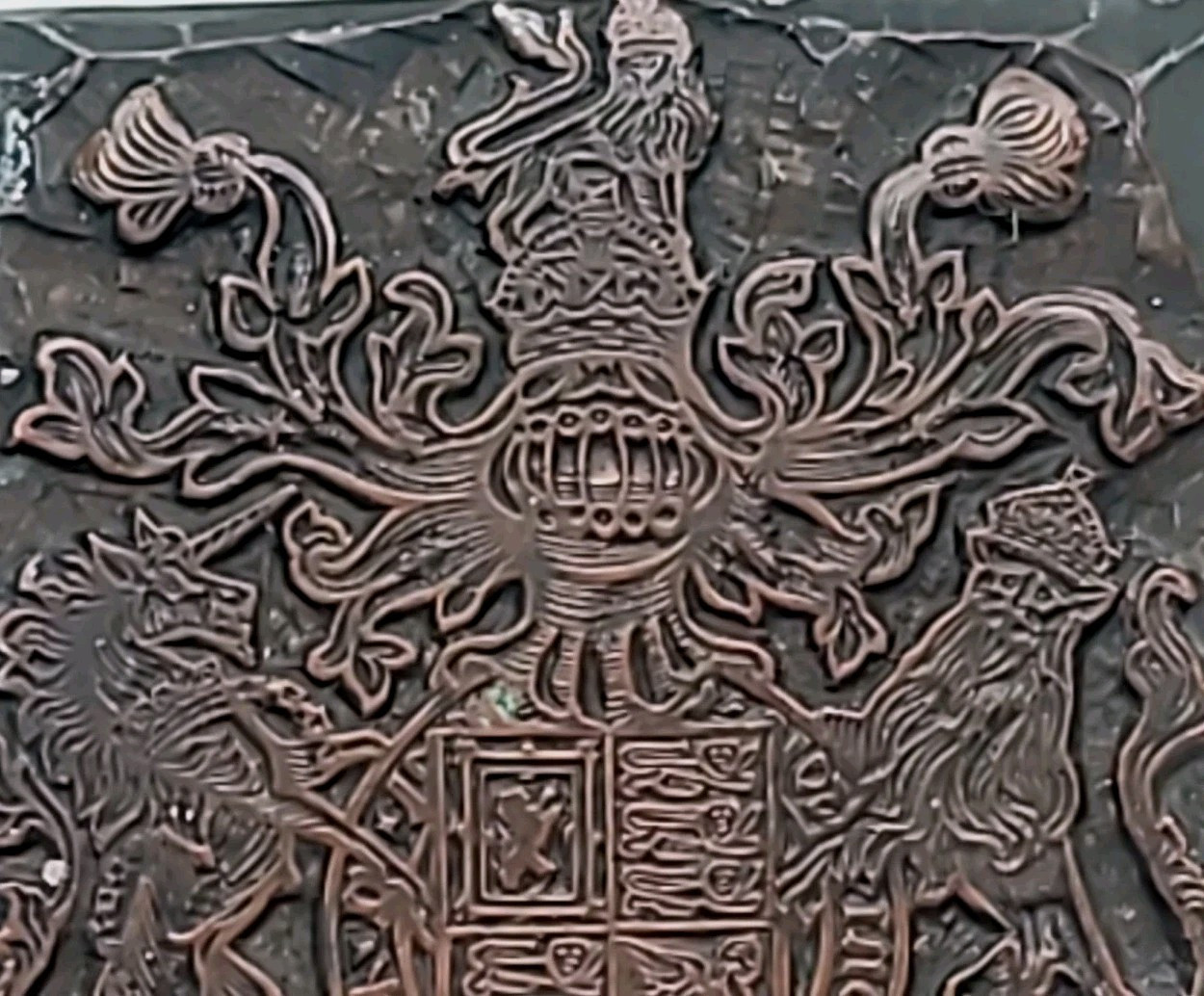
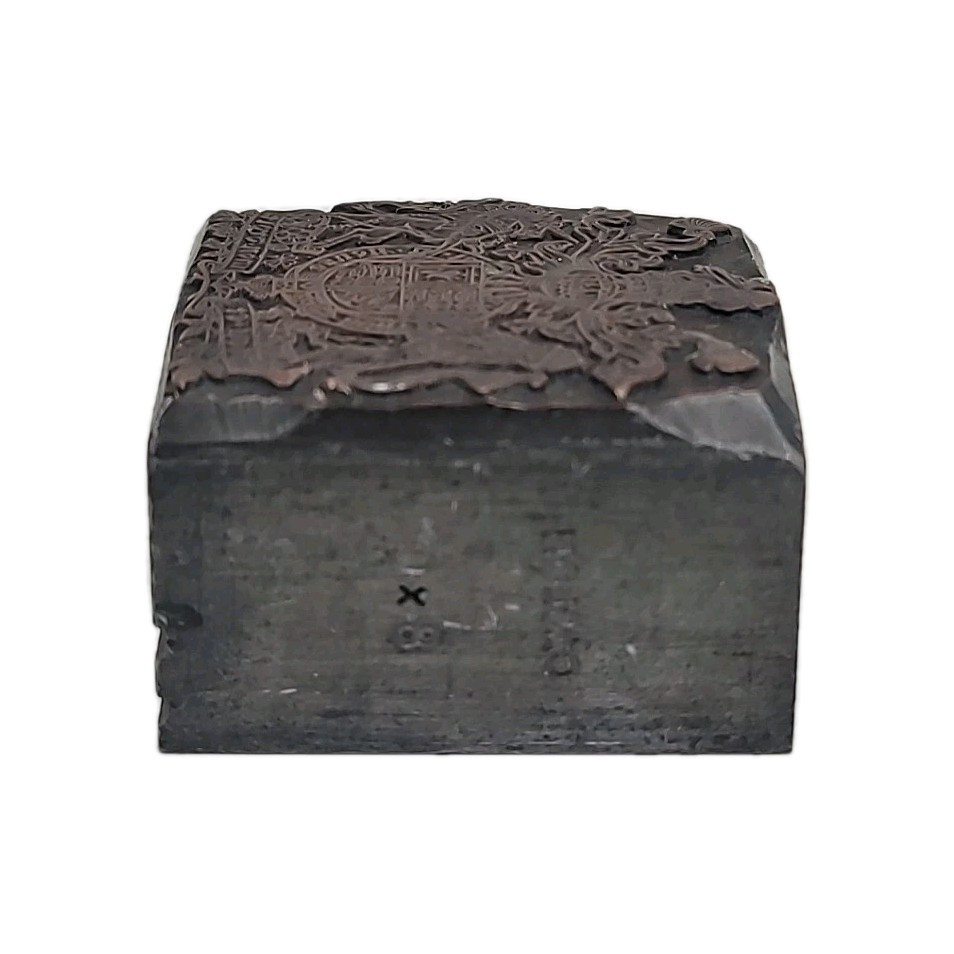
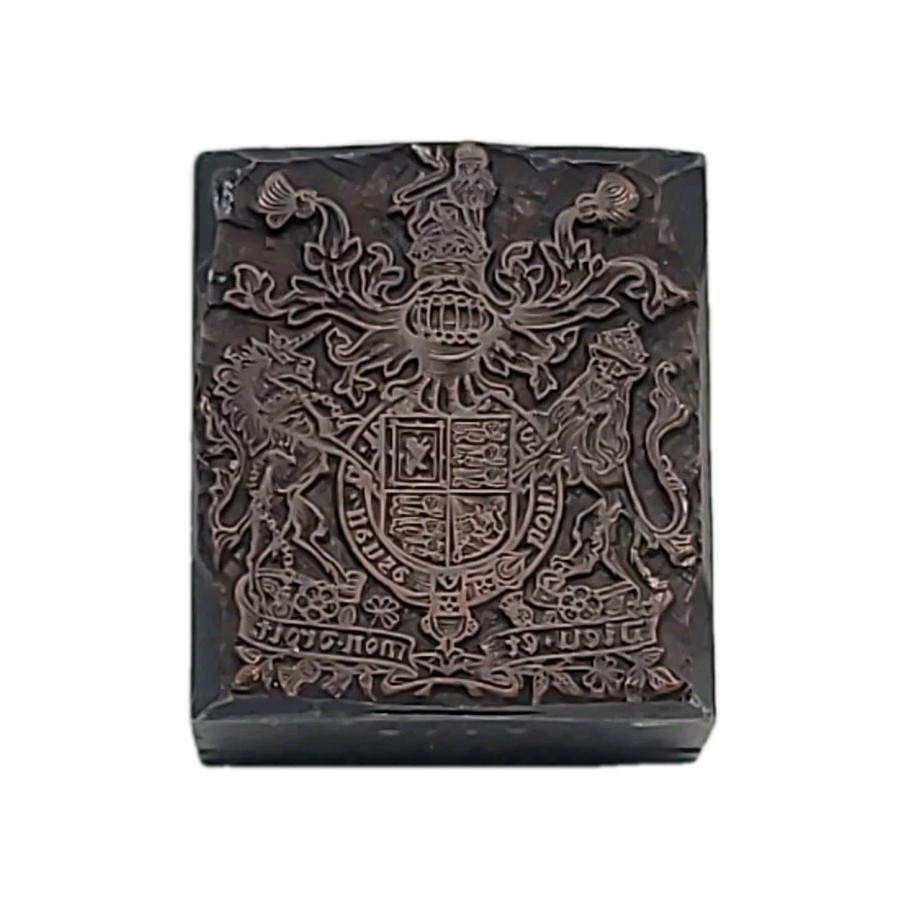
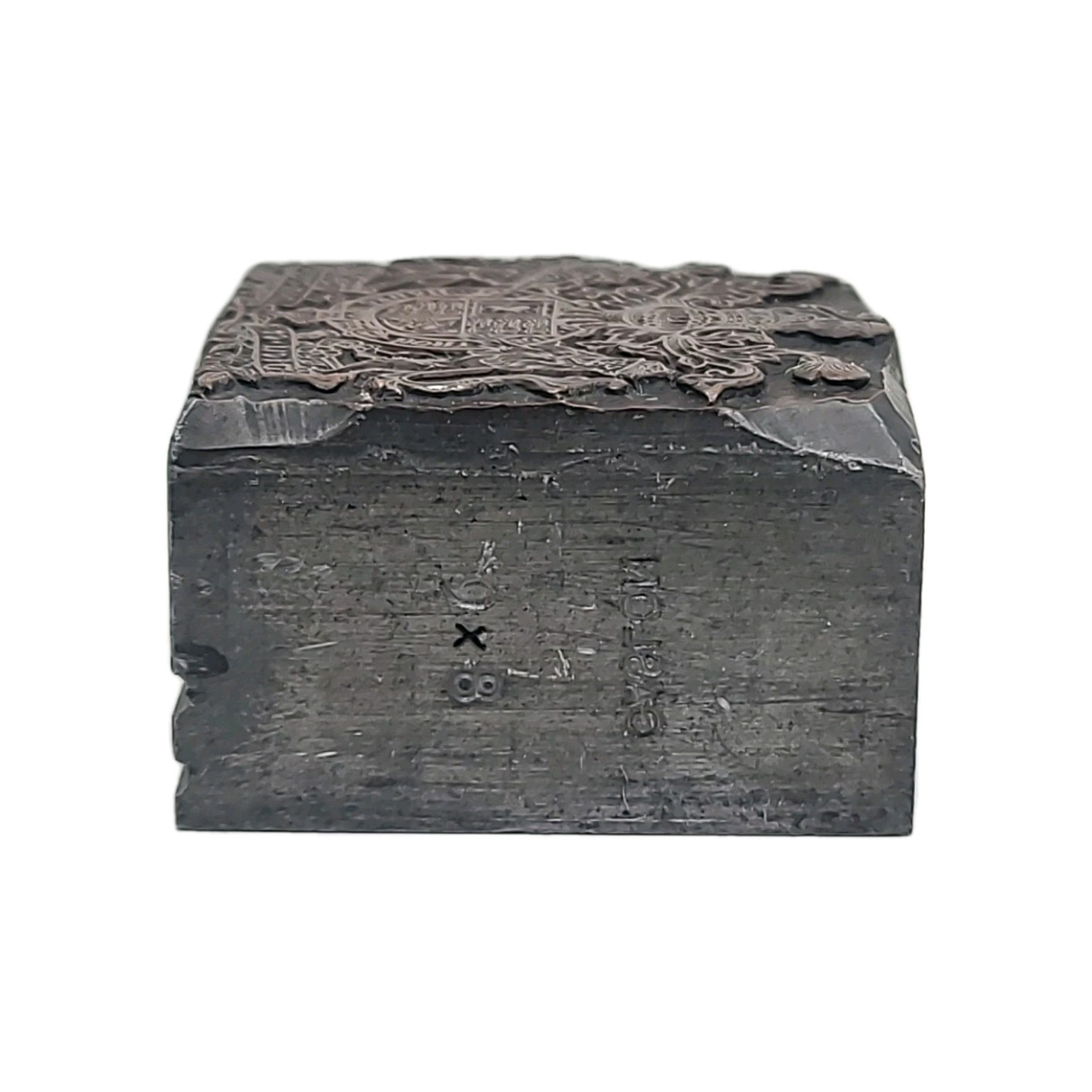
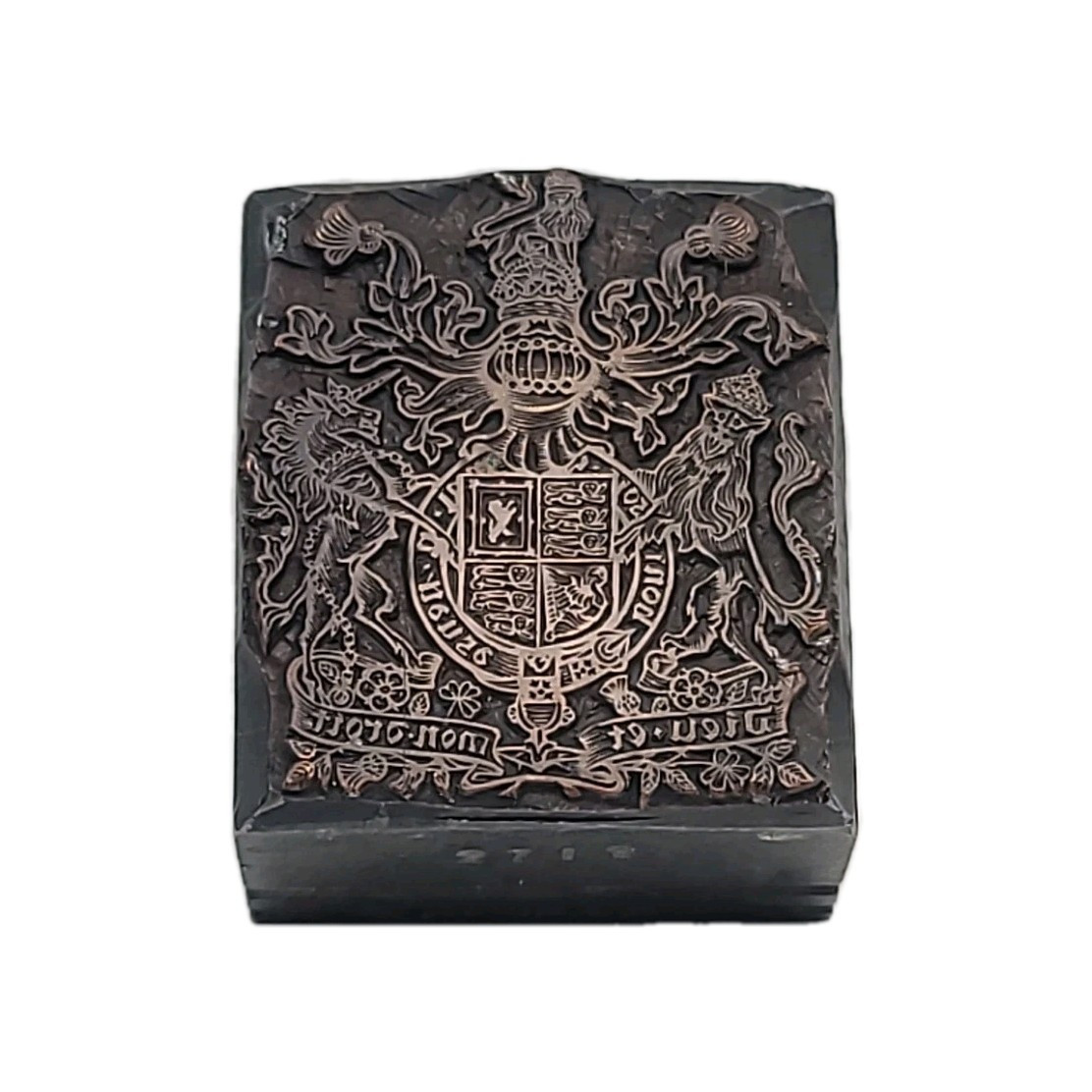
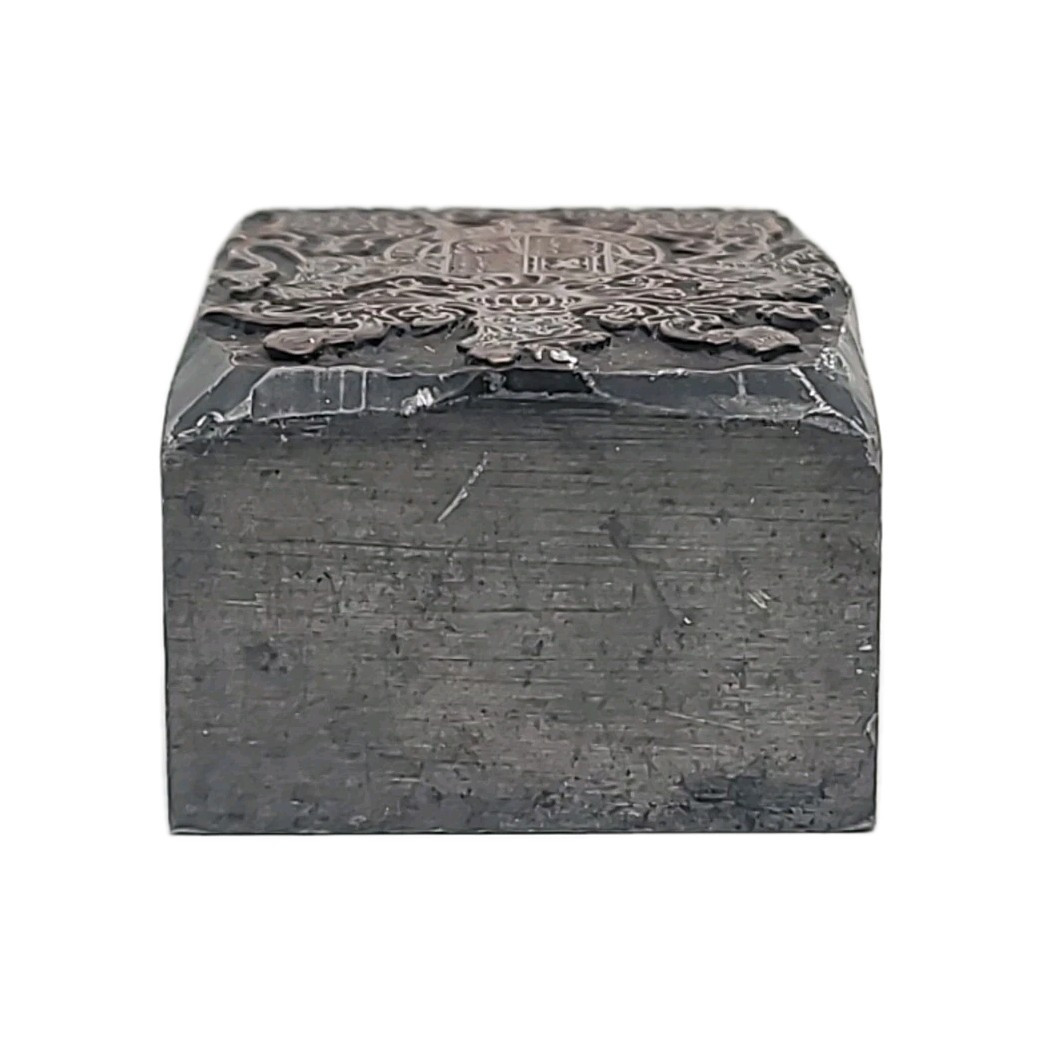
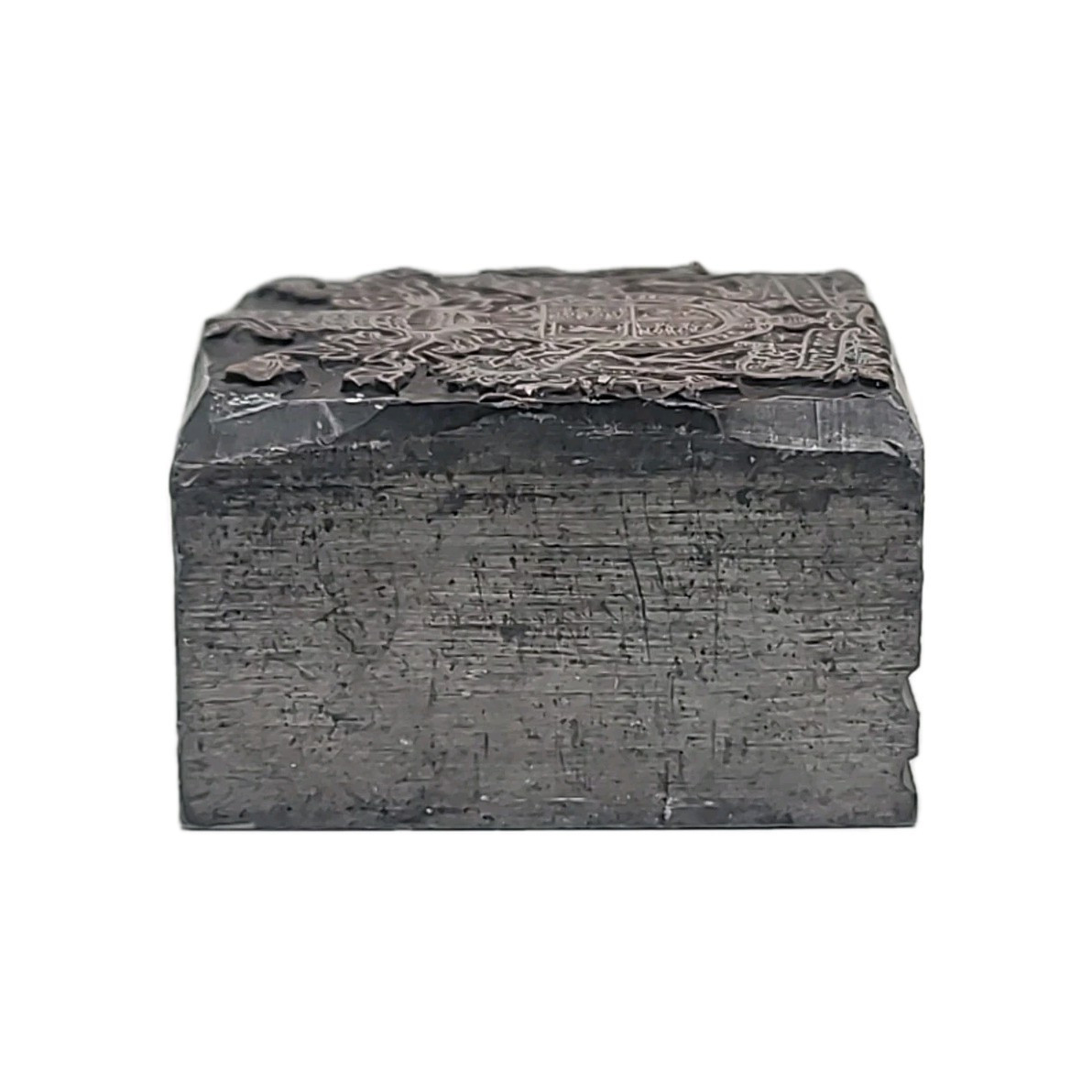
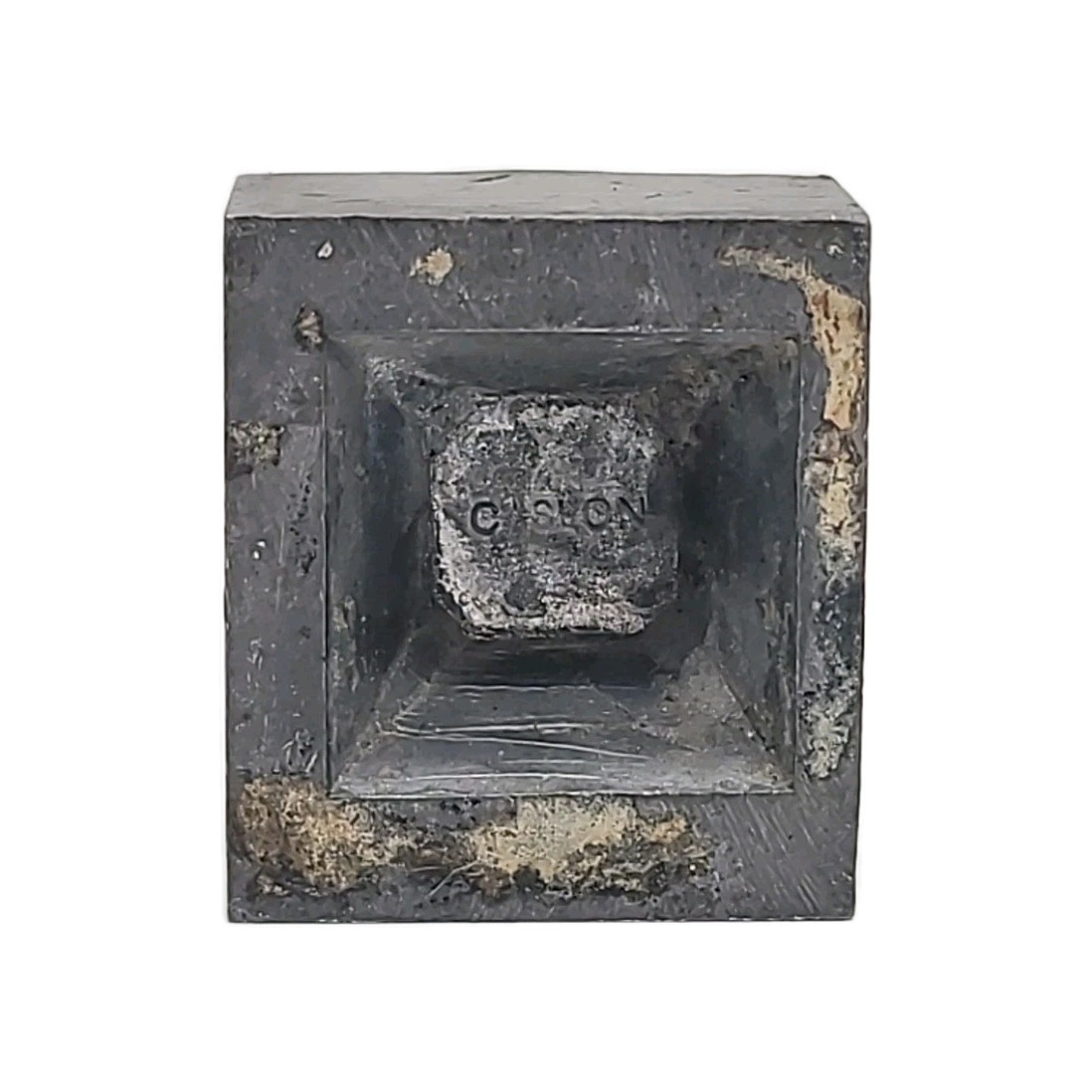
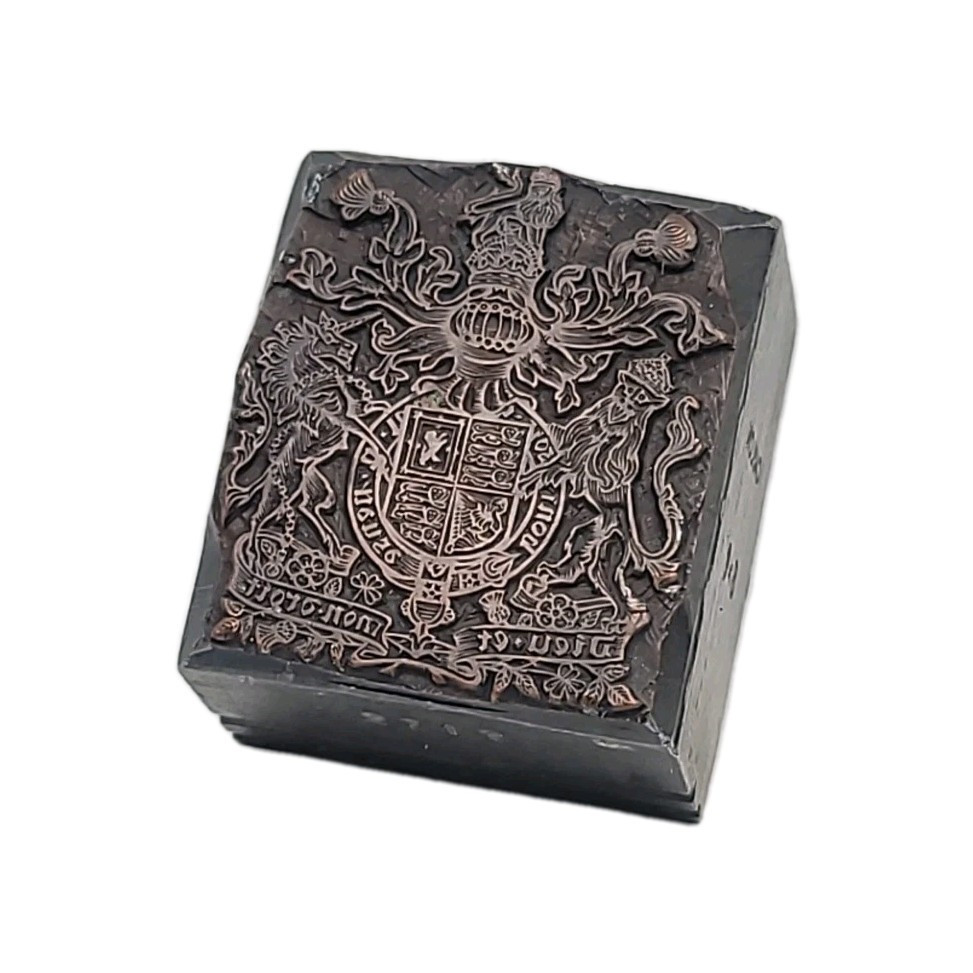
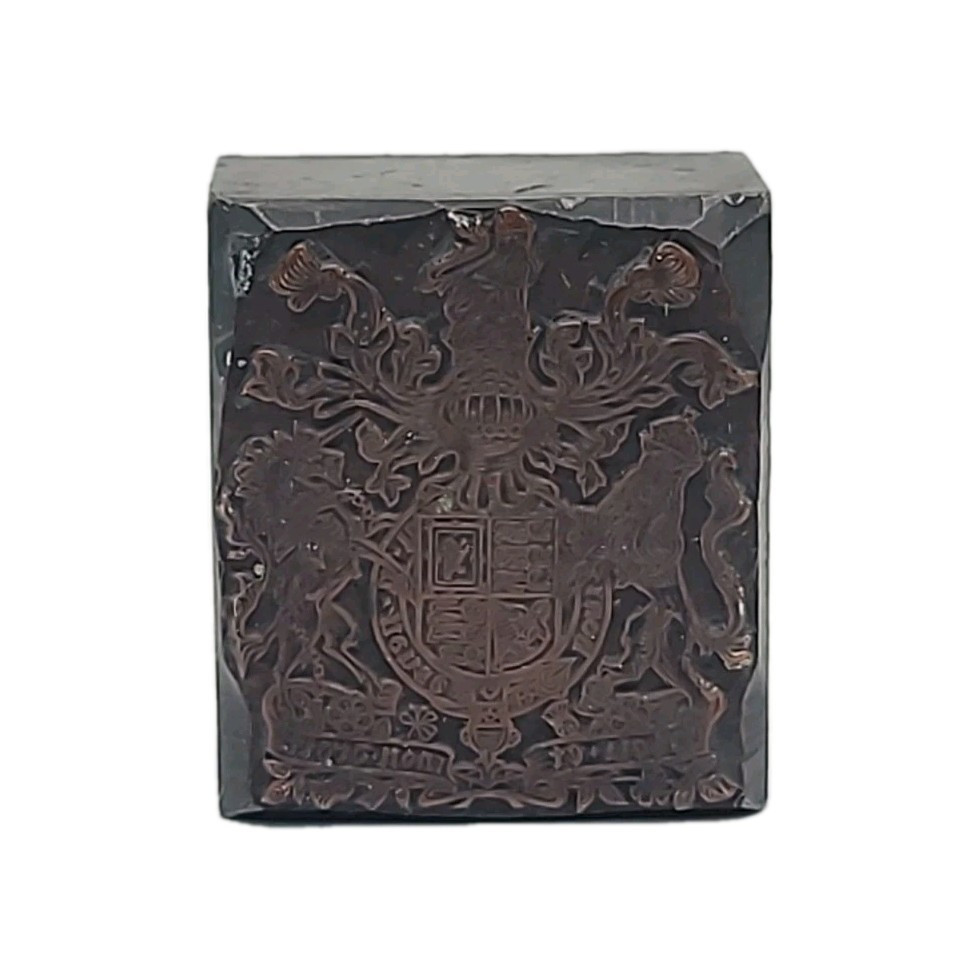
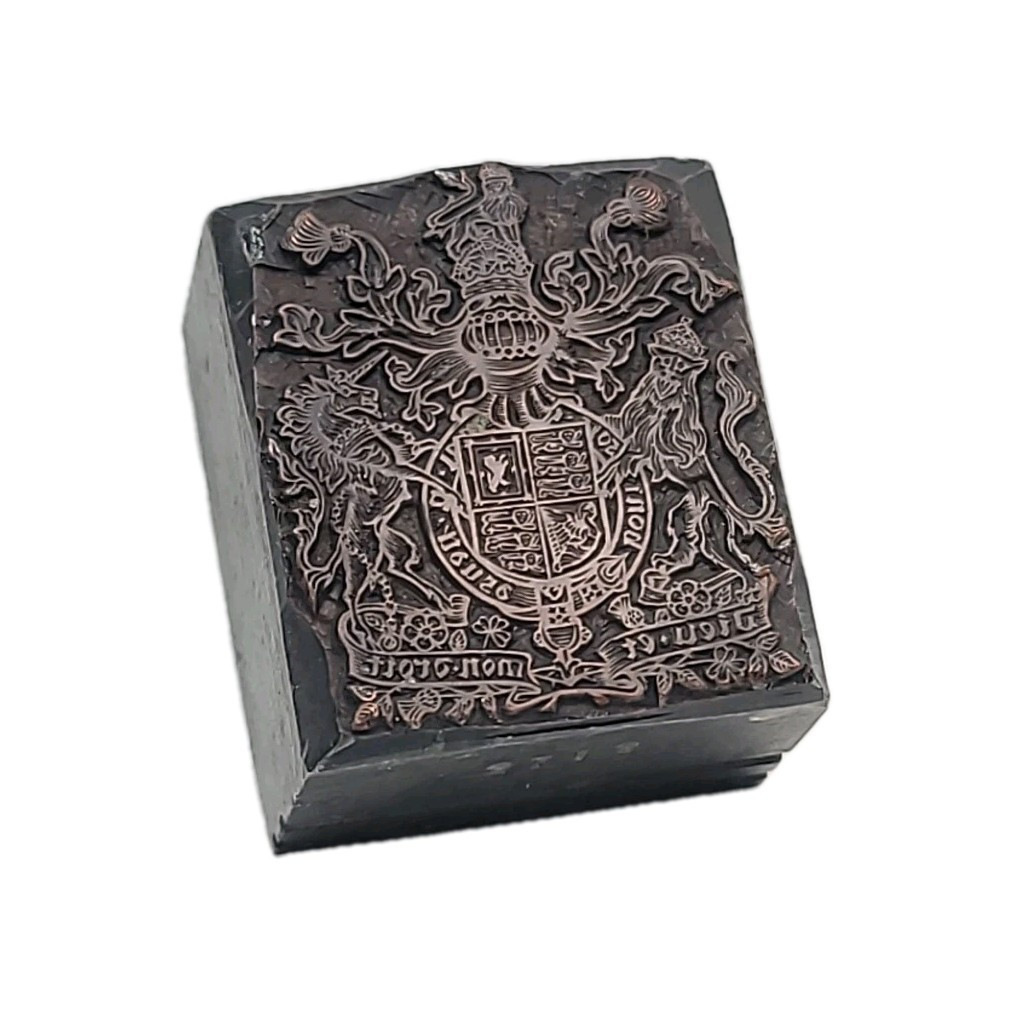
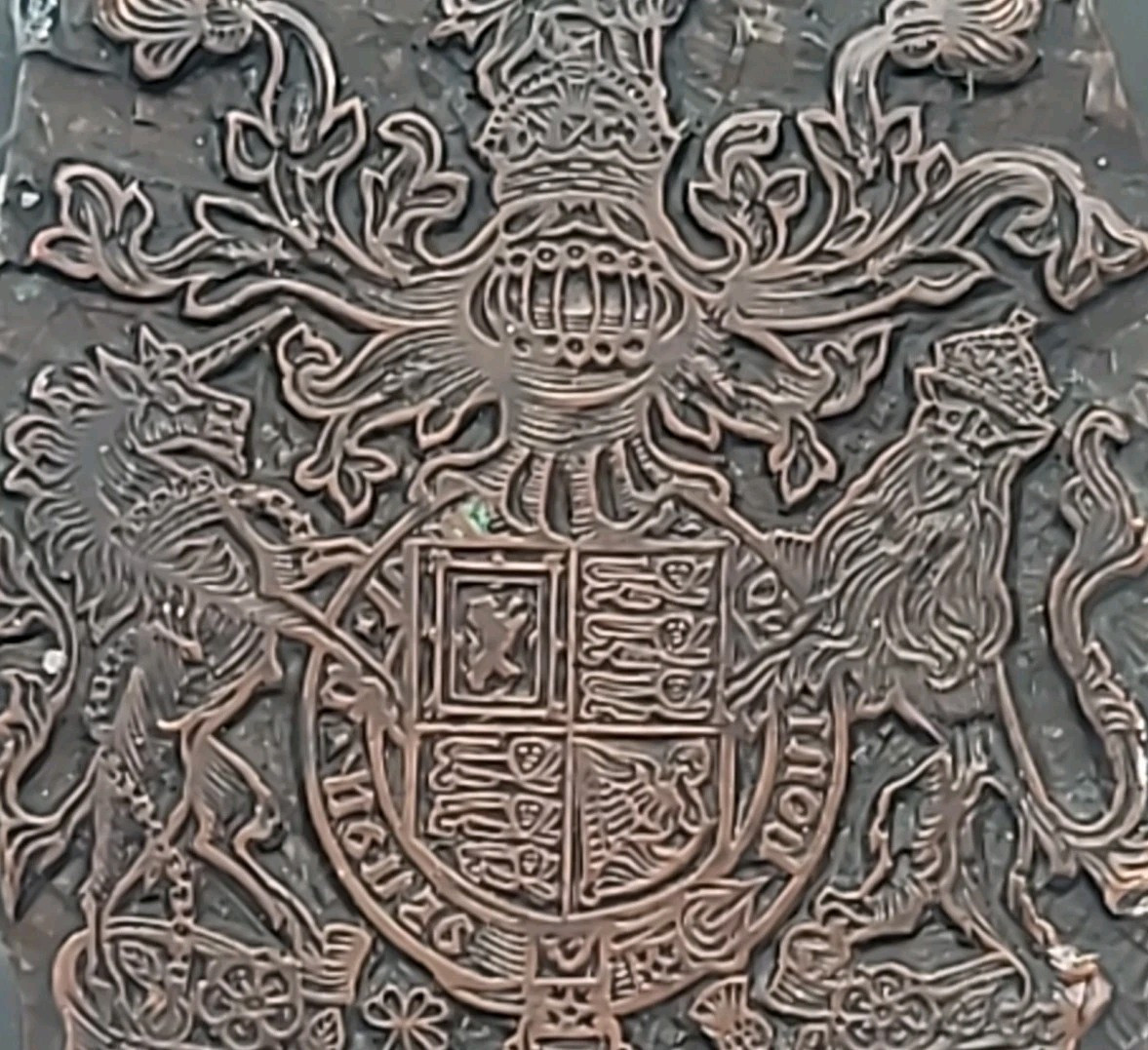
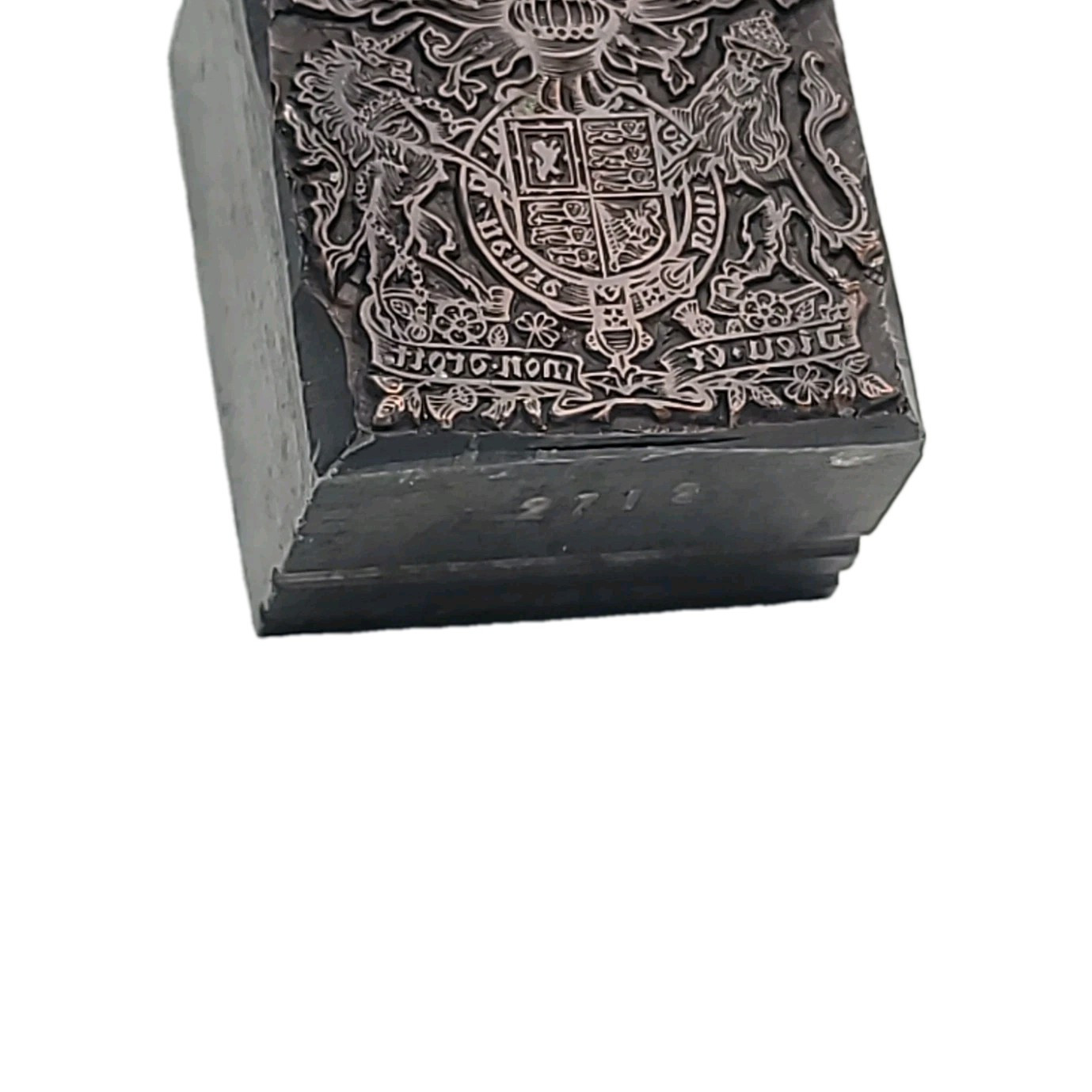
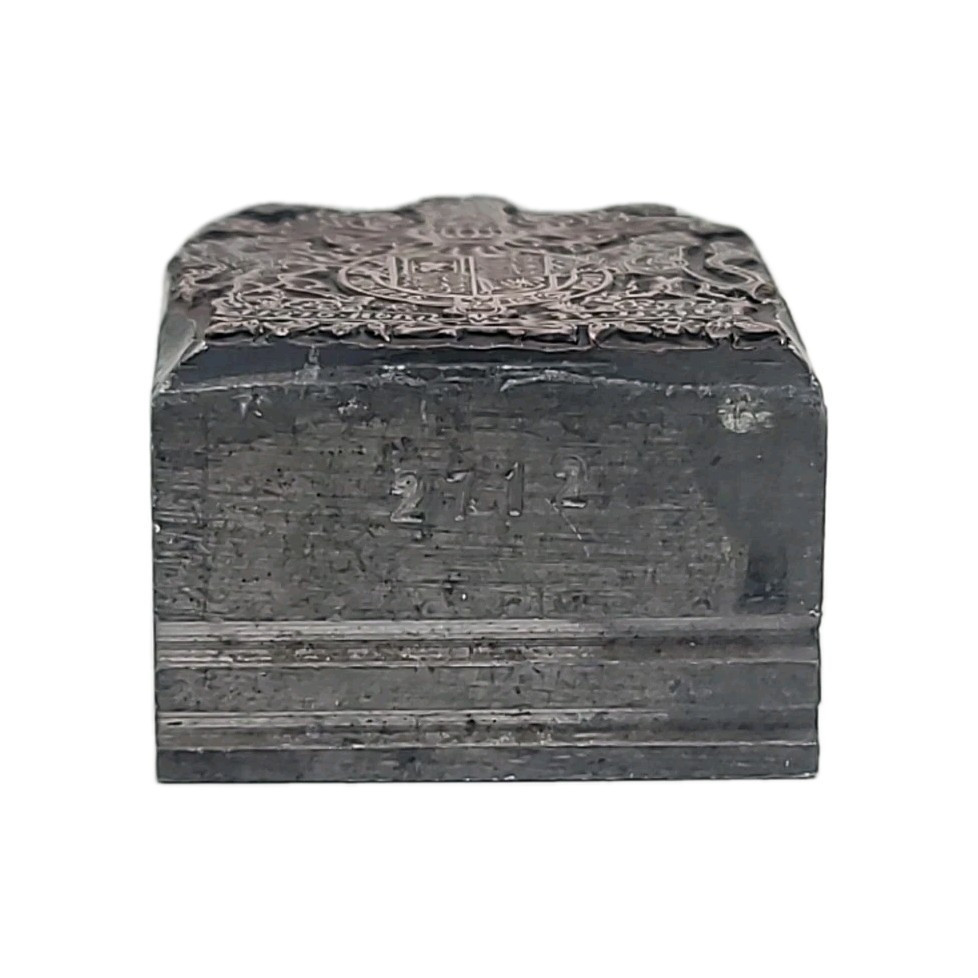
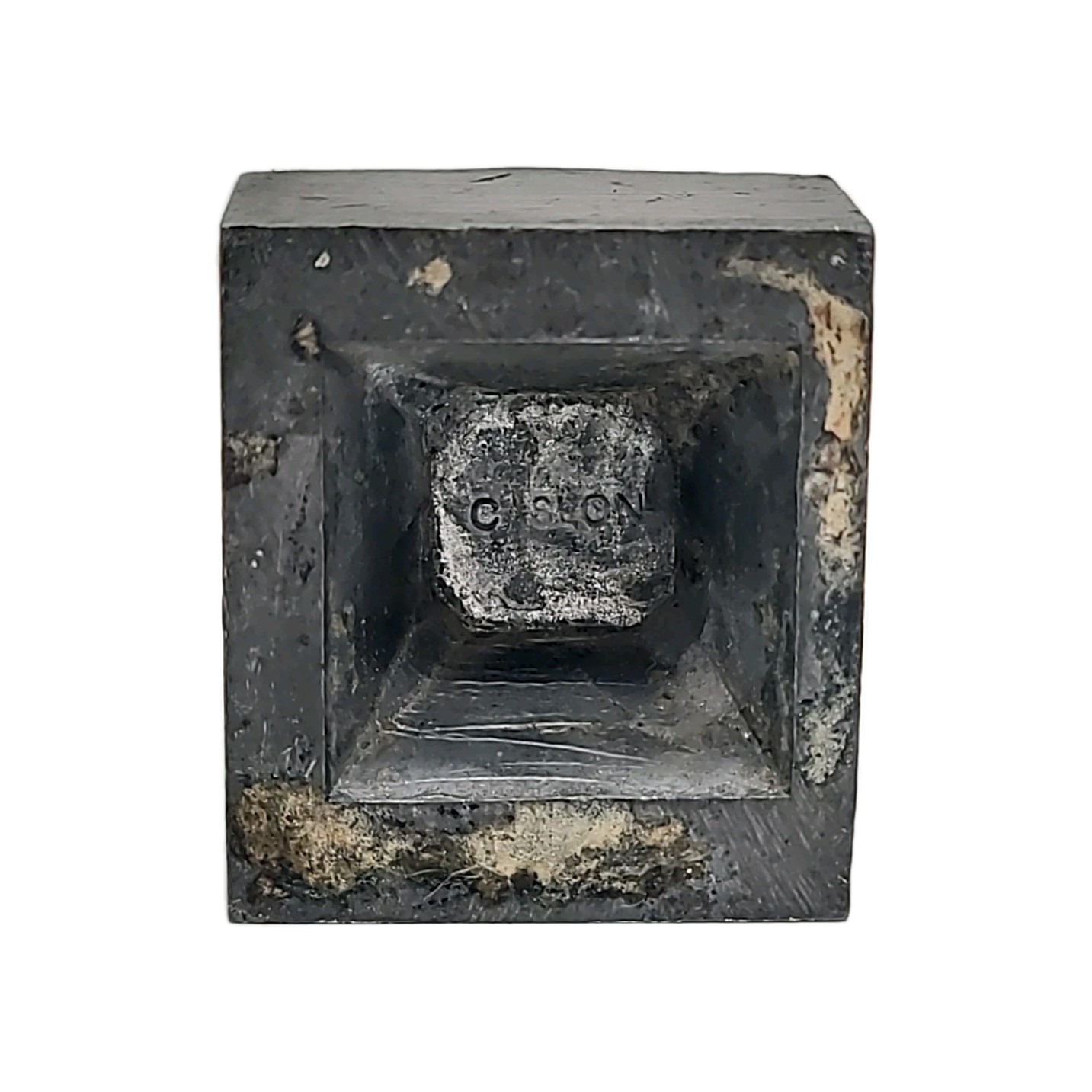
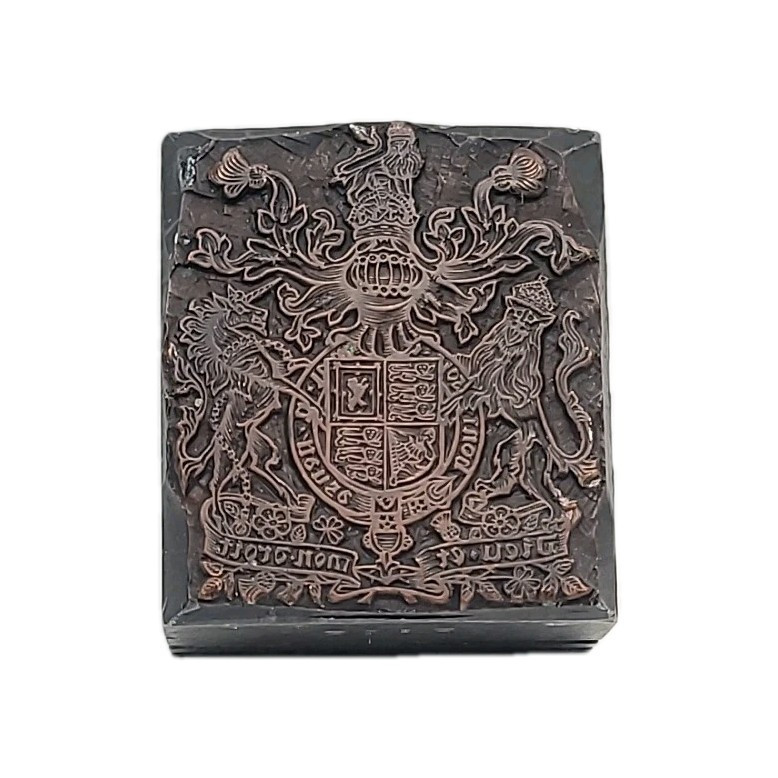
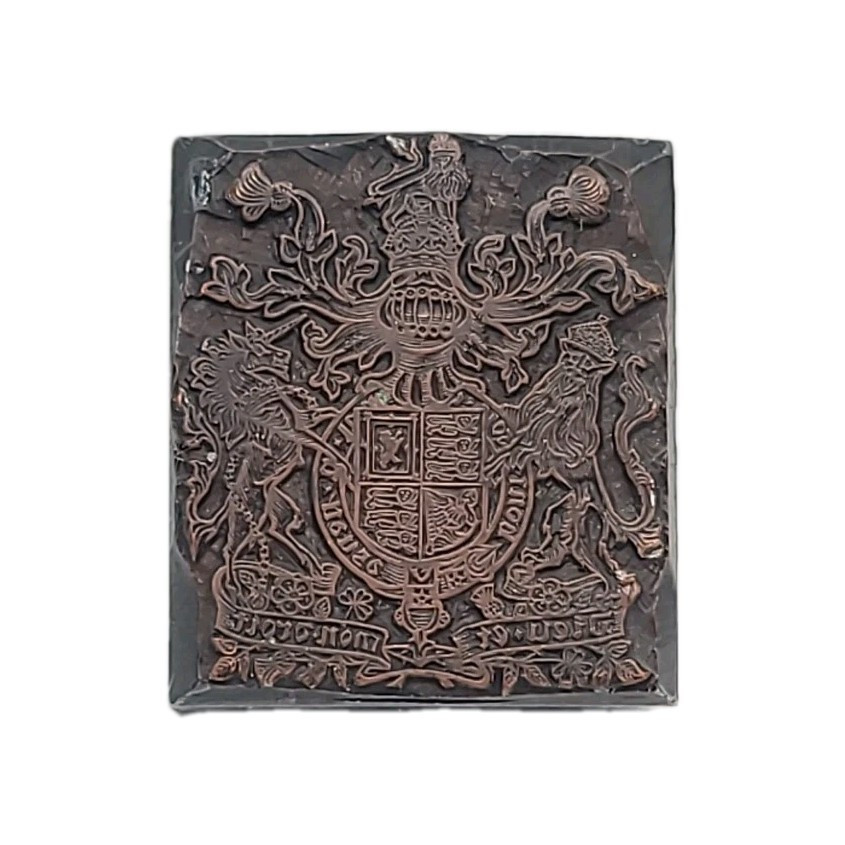
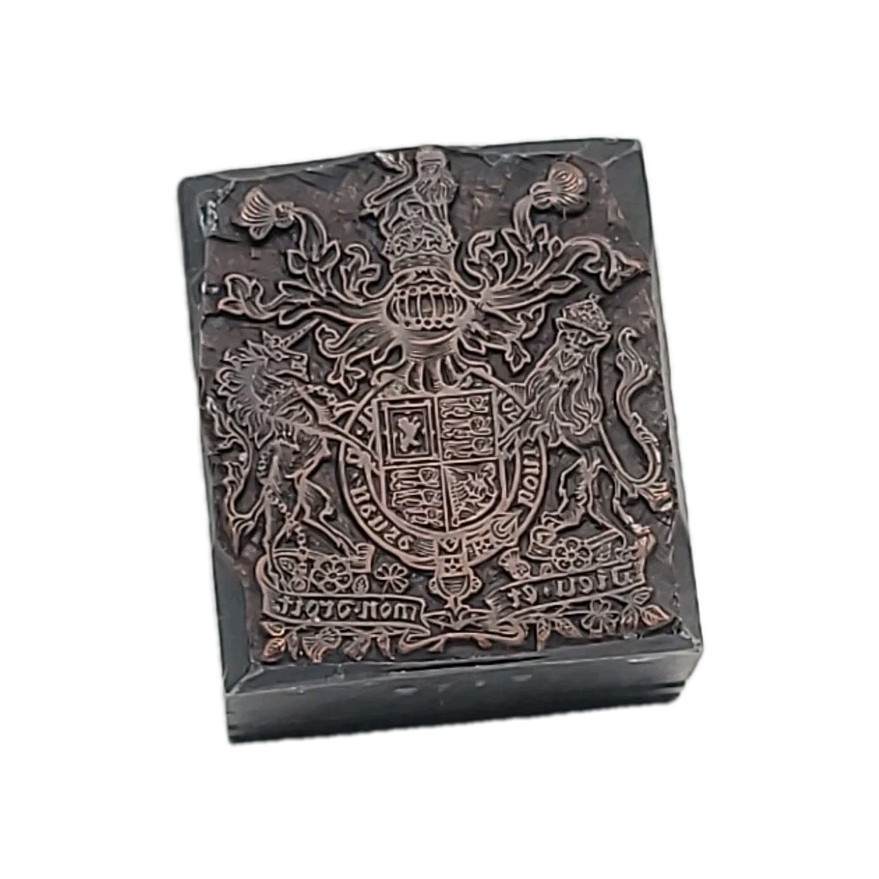
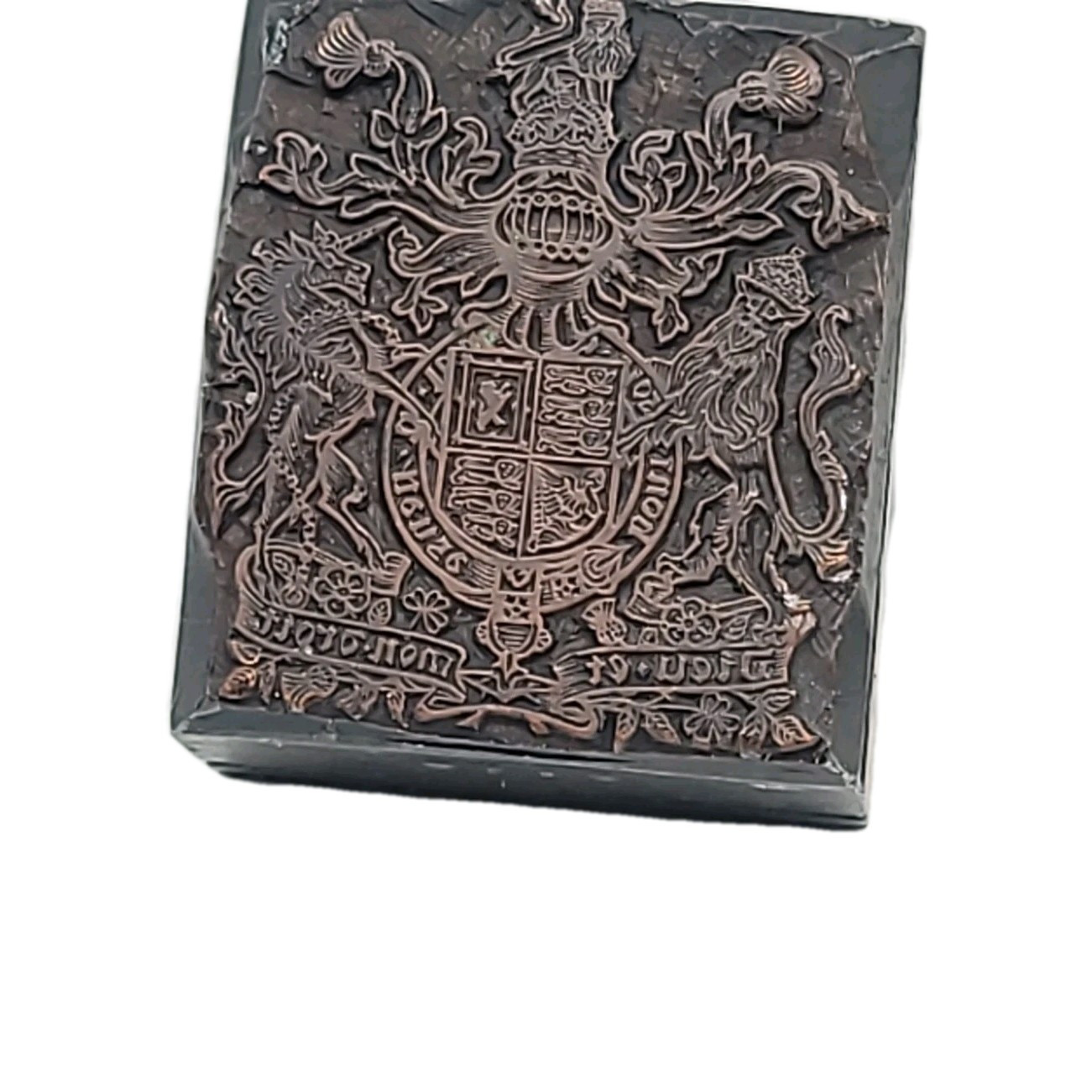
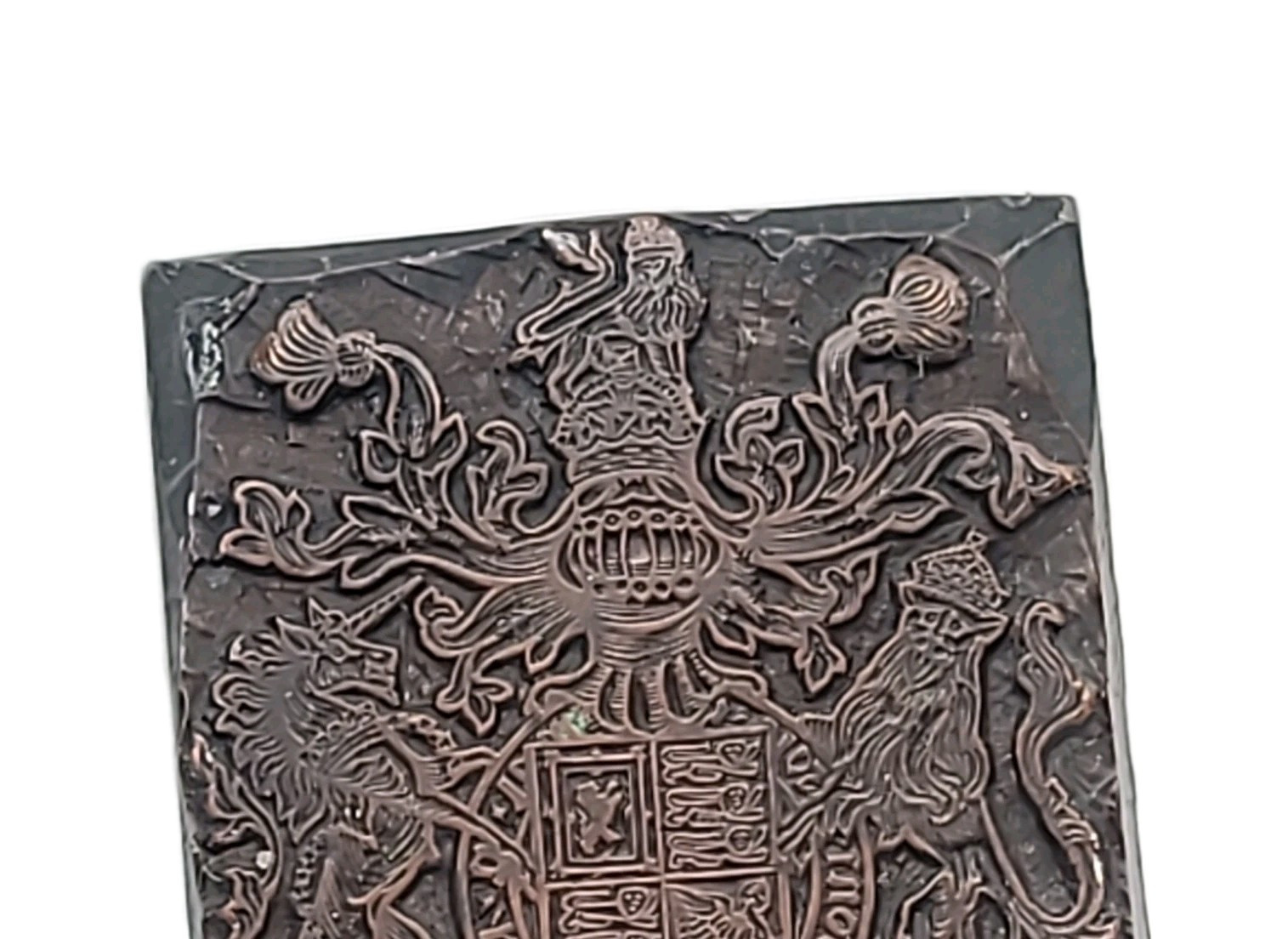
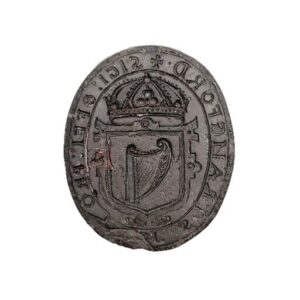
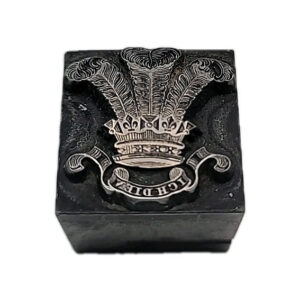
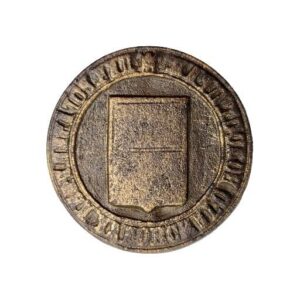
Reviews
There are no reviews yet.